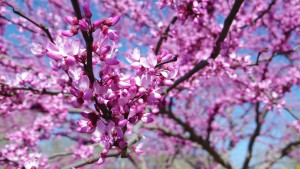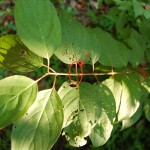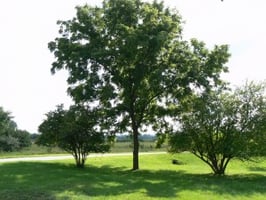St. Louis is home to a wide variety of trees, from the stately oak to the delicate dogwood. If...
Beyond the Leaves: Tips for Winter Tree Identification in Missouri
Winter can be a challenging time for tree identification, but with a little knowledge and observation, it can also be a rewarding experience. Missouri, with its diverse landscape and rich variety of tree species, offers ample opportunities for winter tree identification. Here are some tips and techniques to help you identify trees during the cold months.
1. Understanding Tree Anatomy
Before heading into the woods, familiarize yourself with the basic anatomy of trees. In winter, leaves are absent, so you'll need to focus on other features:
- Bark: The texture, color, and patterns of bark can vary greatly between species. Some trees have smooth bark, while others may have deeply furrowed or scaly bark.
- Branches: Observe the branching structure. Some trees have opposite branching (where pairs of branches emerge from the same point), while others have alternate branching.
- Buds: The shape, size, and color of buds can be a key identification feature. Some trees have large, prominent buds, while others have small, pointed ones.
2. Focus on Key Species
In Missouri, there are several key species that you might encounter during winter. Here are a few notable ones:
- Oak (Quercus spp.): Oaks have distinctive bark that can be gray, brown, or black, often with a rough texture. Their buds are typically rounded and clustered at the tips of branches.
- Maple (Acer spp.) Maple trees have smooth, gray bark that becomes more furrowed with age. Their buds are often pointed and can be red or green, depending on the species.
- Pine (Pinus spp.) Pines are easy to identify by their needle-like leaves, which can be clustered in bundles. The bark is often thick and scaly.
- Hickory (Carya spp.): Hickories have a shaggy, grayish-brown bark and large, terminal buds. The buds are often longer than those of other hardwoods.
3. Use a Field Guide
Investing in a good field guide can enhance your winter tree identification experience. Look for guides that include photographs and detailed descriptions of trees in winter. This will help you match the features you observe with the characteristics listed in the guide.
4. Take Notes and Sketches
As you explore, take notes on the characteristics of the trees you encounter. Sketching the bark, buds, and overall shape can help reinforce your memory and improve your identification skills over time.
5. Join a Local Nature Group
Consider joining a local nature group or attending workshops focused on tree identification. Many organizations offer guided walks during winter, providing you with expert insights and additional resources.
6. Practice Patience and Observation
Winter tree identification requires patience and a keen eye. Spend time observing the trees in your area, and don’t hesitate to revisit the same trees throughout the season to see how they change.
By focusing on the unique characteristics of trees, using resources like field guides, and engaging with your local community, you can develop your skills and deepen your appreciation for the natural world. So bundle up, grab your binoculars, and head out to discover the beauty of Missouri's winter landscapes!
Happy Exploring!
The St. Louis Tree Pros Team
314-312-1331



